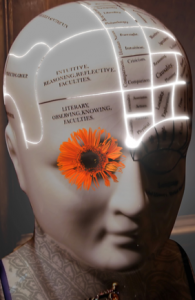 How can people keep thinking something when evidence around them is screaming a different reality? How can we make sure that thinking blocks don’t happen to us?
How can people keep thinking something when evidence around them is screaming a different reality? How can we make sure that thinking blocks don’t happen to us?
It’s more common that we would like to believe. We may want to be independent thinkers, but we end up following the crowd, arriving at conclusions that are neither rational nor useful. That’s the way our brain works. We make a lot of assumptions, and some of these are necessary for our survival. But how do we know which assumptions are useful and which ones are blocking us? What if the way we habitually think created a wall, hiding all sorts of possibilities and opportunities?
In a blog post today, Nobel economist Paul Krugman points out an interesting phenomenon. Fears among Federal Reserve officials that money easing policy can cause inflation have been contradicted by six years of evidence to the contrary. But they still have those fears. As Krugman puts it, they are “clinging to a view of the world in the teeth of the evidence, failing to reconsider their beliefs despite repeated prediction failures…”
The danger of inaccurate assumptions
For businesses and organizations, a structural inability to interpret reality is a deadly disease. We create our own paradigms and we get stuck inside them. Moving beyond that paradigm to innovation requires determination and dedication. It takes practice and skill. It requires moving beyond something that feels comfortable and familiar to something that might feel a little dangerous, but that’s another assumption.
A major stumbling block to growth for organizations lies in the ‘cognitive constraints’. In other words, there are mental models, or, more simply, limiting beliefs that prevent us from seeing solutions.
We need some of our assumptions, but we also need to distinguish the ones that are holding us back. Assumptions are, like any other mental construction, the result of external factors, like the environment, education, experiences, values, etc. and internal factors, like the chemistry and physics of our mind. The difference between an assumption and a statement of reality is only the realm of validity, and that can often depend on cultural circumstances. For example, what do people think about guns or healthcare in the US, Canada, and Europe?
A narrative on thinking for complex times
We must never be slaves to our assumptions. They must be challenged so we can find ways ahead. We’ve produced an entire narrative to chart a journey through various mental models, from the financial crisis and Wall Street, and towards the innovative possibilities of a new economy, based on a new economics. We believe our greatest challenge in our efforts towards prosperity is our ability to think. Complexity and interconnection increasingly define the life of organizations. This calls for a much better ability to think in a systemic way. We can learn to think better. There are methods and there are tools, not just so we can survive, but so we can continuously break through to greater and sustainable realities.
The Human Constraint
We asked ourselves how we could share our broad experience in reexamining assumptions and creating breakthrough and innovation with organizations. We decided on a narrative, where people can read a story, understand its implications for their own circumstances, and access a method and tools to stretch their own thinking and challenge their mental models. The result is a new business novel+website called ‘The Human Constraint’. Each chapter has a link so readers can access further insights and thinking process tools to improve their own thinking in a systemic way. We hope it will be of assistance to many. Our future depends on our collective ability to think it through.





Leave a Reply